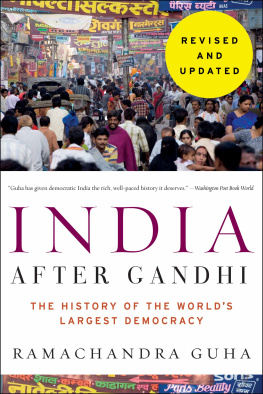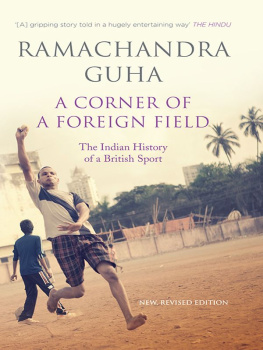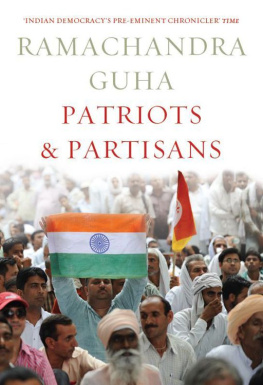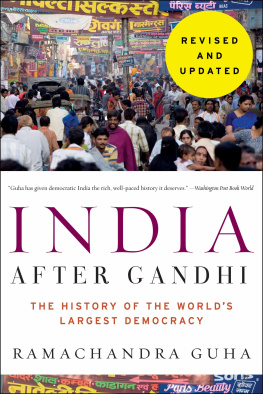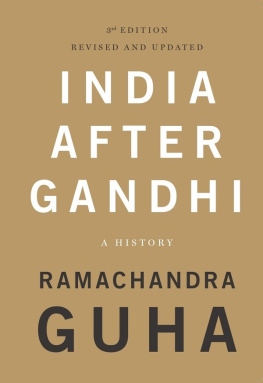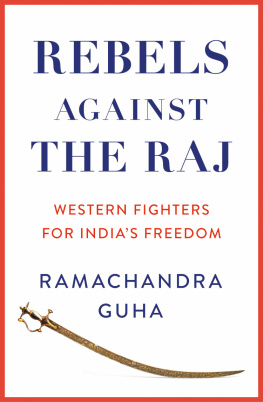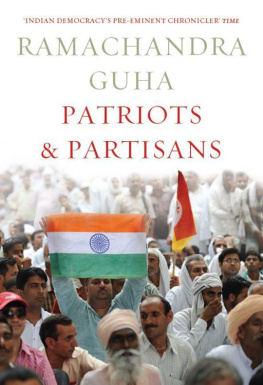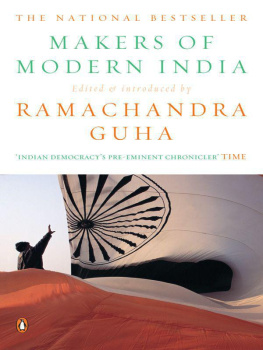India is a pluralist society that creates magic with democracy, rule of law and individual freedom, community relations and [cultural] diversity. What a place to be an intellectual!... I wouldnt mind being born ten times to rediscover India.
Nobody could be more conscious than I am of the pitfalls which lie in the path of the man who wants to discover the truth about contemporary India.
In recent years, the names of several towns and cities in India have been modified or changed thus Bombay has become Mumbai, Madras has become Chennai and Calcutta has become Kolkata. Likewise, the Bangladeshi capital, Dhaka, was for much of the period covered by this book known as Dacca, while the Chinese capital, Beijing, was until the 1980s referred to as Peking. The usage in this book conforms to historical convention rather than linguistic precision. For example, the capital of Maharashtra is referred to as Bombay until we come to the time when its name was officially changed to Mumbai.
T HIS BOOK WAS NOT my idea. In November 1997, a British publisher I had not heard of contacted me in Bangalore (as it then was). He had read an essay of mine in the Oxford historical journal, Past and Present, and wished to meet me. He was in Delhi soon; would I be there too?
As it turned out, I had a meeting in Delhi the week the publisher was in town. We met in his hotel, in a large airy atrium that served as a coffee shop. His name was Peter Straus, and he ran Picador, where he published, among other writers, V. S. Naipaul and Michael Ondaatje. He was carrying a copy of the Past and Present issue with my article in it. What, he asked, was the project I was working on now?
I pointed to the journal in his hands. I was, I told him, developing the essay he had read (on the social history of sport in colonial India) into a book. Would I consider abandoning that project, asked Peter Straus, and write a history of independent India instead?
This second question left me speechless. The scale and scope of the book he was suggesting seemed beyond my ambitions, and my training. I had begun writing occasionally for the press, but I still saw myself as principally an academic historian, who wrote for his peers and for university students. The books I had previously written had been on topics I had chosen myself: a social history of peasant protest in the Himalaya, two co-authored books on environmental conflicts, a biography of the maverick anthropologist Verrier Elwin. All had been published by university presses, and all had been highly focused, bounded by theme and/or region. How could I write, for a general readership, a single-volume history of a country as large and as diverse as India?
I am not normally at a loss for words, either in conversation or in print. Now, as I stayed silent, the visiting publisher asked some more questions. Was it not the case that historians of India stopped their narratives at 1947? Now that the nation had observed the fiftieth anniversary of its founding, would not a look back at its complicated and tumultuous history be a subject worthy of scholarly analysis? Would not such a book interest younger Indians, not to speak of the world at large? Did I not (as the article in Past and Present showed) greatly enjoy reading unpublished letters and manuscripts, as well as newspapers on microfilm?
To all these questions I nodded assent. So then, said the publisher, I agreed that such a history needed to be written. Why not research and write it myself? Why not at least think about it?
We left it at that. A month later, Peter Straus rang me in Bangalore, and asked whether I had given the idea further thought. I had, indeed, and sensed its appeal. He then told me to send a formal proposal, which I did, whereupon a contract was signed in March 1998, with a delivery date specified for March 2002, or four years later.
Now the job had to be done, the research begun. Where would I start? As I explain in the prologue to the first edition, had I been a historian of Europe or of a European country, commissioned to write a history of his country or continent since the end of World War II, I would have ordered five hundred books from the library scholarly studies on politics, culture, law, economic policy and social change, with biographies of major or significant politicians thrown in. And, with these in hand, I would have attempted a work of synthesis.
In India, such secondary works were not available, for contemporary history as a branch of history had not yet been born. I had therefore to assemble the relevant primary materials on my own. The National Archives had plenty of state records on the colonial period, but precious few for the period since 1947. Fortunately, there was the Nehru Memorial Museum and Library (NMML), which had the private papers of hundreds of influential and important Indians. The NMML also had a superb collection of newspapers and journals on microfilm.
I spent many enjoyable months at the NMML, looking through its extraordinarily rich collection of (mostly unused) materials on the post-1947 period. The endnotes to this book provide more details on the numerous collections I consulted. Among them, the two that were perhaps most revealing were the papers of C. Rajagopalachari, the great friend-turned-critic of Jawaharlal Nehru, and of P. N. Haksar, Indira Gandhis closest political confidant between 1967 and 1974.
The NMML also housed the old newspapers through which I tracked or fleshed out major events and controversies, the records of the Indian Parliament, as well as runs of left- and right-wing (as well as centrist) journals that conveyed the flavour and intensity of the many and various political debates of the period. This archive-cum-library was the bedrock of my research, but I also found vaulable materials in archives elsewhere in India and in the United Kingdom.
Those who read my newspaper columns know that I am a man of strong opinions. However, when it comes to my scholarly work I try to let the research do the talking. No writer can entirely hide or suppress his biases, but I did want to write this book in as non-ideological a manner as possible. I was seeking to interpret, not to judge. I wished to narrate, in as rich detail as I could, the conflict-ridden history of this unnatural nation and unlikely democracy. I also wanted the book to be comprehensive in scope to deal with politics and economics, religion and language, caste and gender, although the confines of a single book and the limitations of an individual scholar surely mean that my reach has exceeded my grasp.

